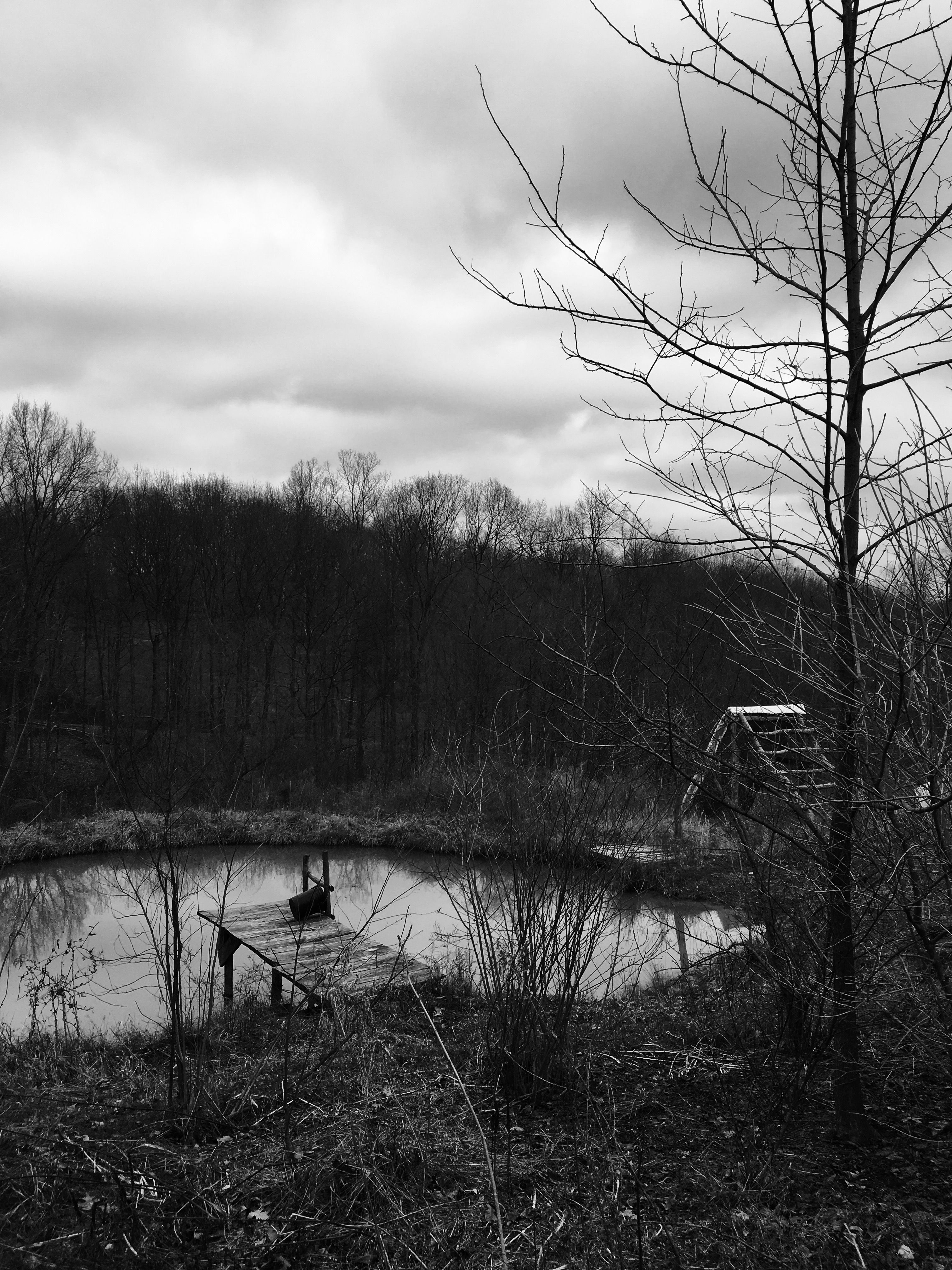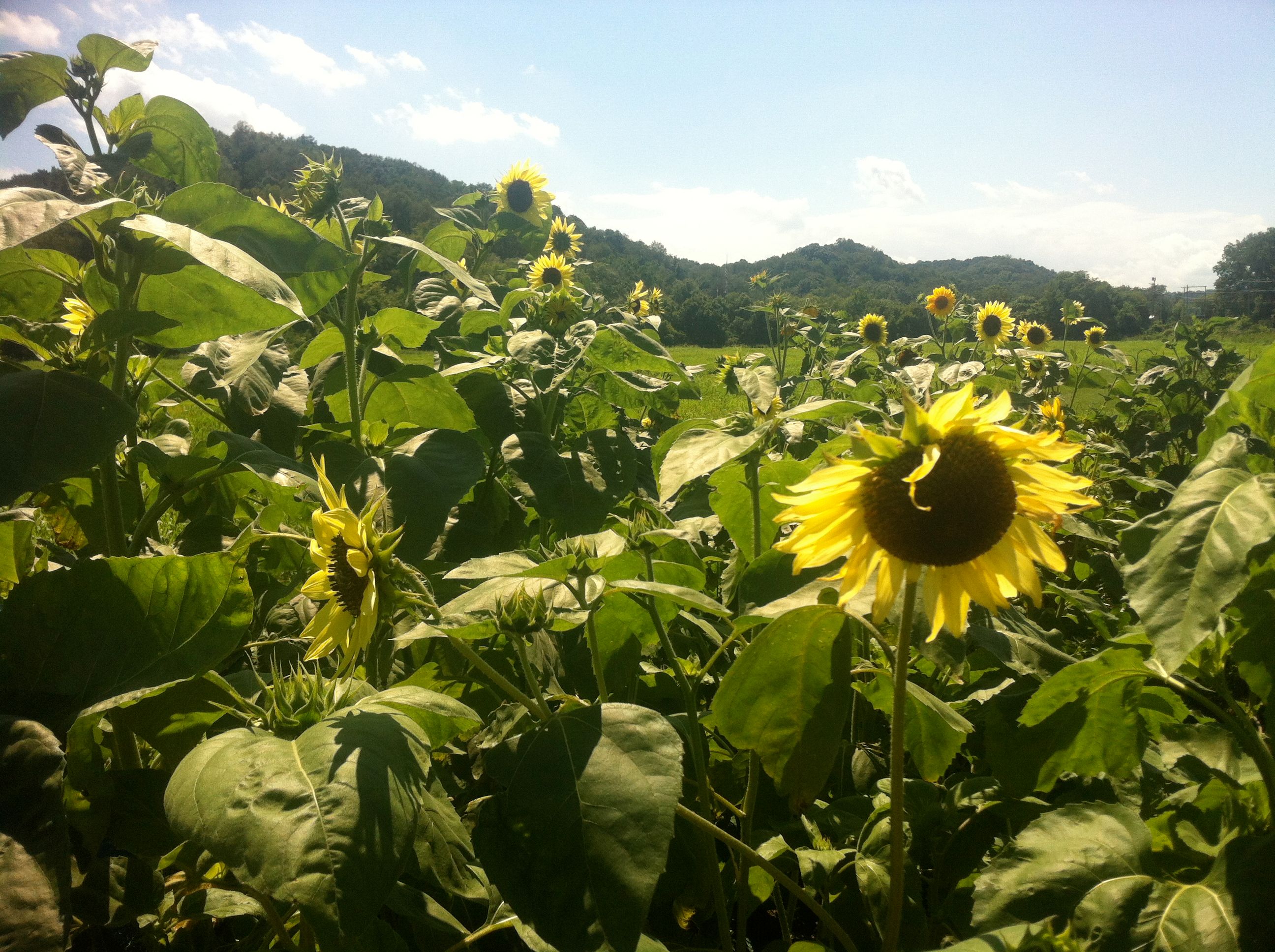
Over the last couple of months, I have attended CFI workshops throughout Athens County. I am so impressed with the people in our area, as they share their knowledge about tapping trees for sap, inoculating logs to grow mushrooms, and much more. I will tell my stories from the 'Tap for Sap: An interactive guide to DIY tree tapping' workshop in hopes that I can help pass on some of the wisdom.
'Tap for Sap' was my first CFI workshop and my first introduction to tree-tapping. Westin, who lives on Solid Ground Farm with his family, led the workshop. He showed us the tap he drilled that morning in his sugar maple. The clear sap, which I learned is also called ‘tree water,’ dripped slowly into the large glass jug hanging below the tap. We stood in a half circle as Westin explained the details of tapping trees and making maple syrup.
I learned that tapping trees is the oldest form of agriculture in North America. Most of the sap flow is above a root or below a branch. Certain temperature combinations produce the most sap—below freezing at night and above freezing during the day are the two most common times. Because tree-tapping is seasonal, sap is the sweetest at the beginning to middle of the run. Once buds on the tree start to swell, the sap changes flavor. Some people say it tastes ‘buddy.’ I imagine this is a descriptor that makes sense only if you have tasted it. The south-facing part of the tree is best. When drilling the tap, which Westin demonstrated for us, it is best if the hole faces slightly downward and is 2-2.5 inches deep. The sap can spoil, so it should be stored in a fridge or packed in the snow. When cooking sap down into syrup you want it 7 degrees F hotter than the boiling point of water or until it clings to a spoon.
Westin gave us blue plastic cups, so we could taste the tree sap and the syrup he made the night before. He said he boiled the syrup while ‘bouncing a baby on his knee.’ I poured a small amount of the brown maple syrup from a glass jar into my cup, passing the jar in a circle. Westin also encouraged us to taste the tree sap, which is unprocessed and un-boiled, straight from the tree. He warned us that because it is not processed, it could have pathogens in it, but also explained that it is lauded for its health benefits. Tree sap is full of vitamins, minerals, enzymes, and some consider it medicinal. Most of the attendees seemed unbothered by potential pathogen risks. We dunked our cups into a large bucket of clear sap. The sap was refreshing. It tasted and looked like water but was slightly sweet and felt mineral-y in my mouth. The syrup was thick and sweet with that distinct maple flavor.
We ended with a walking tour of Solid Ground Farm. As we walked, we talked about sustainable farming, raising pigs, and how to identify types of trees. Beyond learning about how to tap trees, this workshop asked me to think more about the plant life that I often take for granted. I enjoyed maple syrup in the past, but tree sap was not something I had ever given much thought to. Because there is so much going on around us (underground, under bark) that is not plainly visible, it is easy for our knowledge of land and the things attached to the land (trees, plants, seeds, etc.) to get lost if we stop engaging with them.
I am appreciative that CFI organized this time to provide us with the opportunity to keep engaging. I look forward to upcoming workshops on gardening and composting. I have a small raised bed in my yard that could definitely use some help.
Blog Disclaimer: The views expressed in this blog do not necessarily represent all the views of CFI. All photos that appear in this post taken by author.

